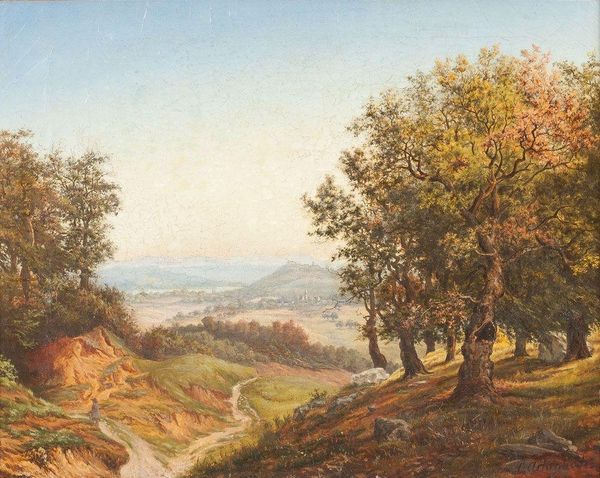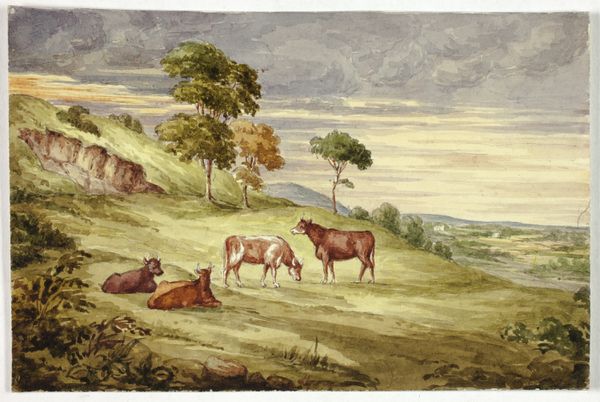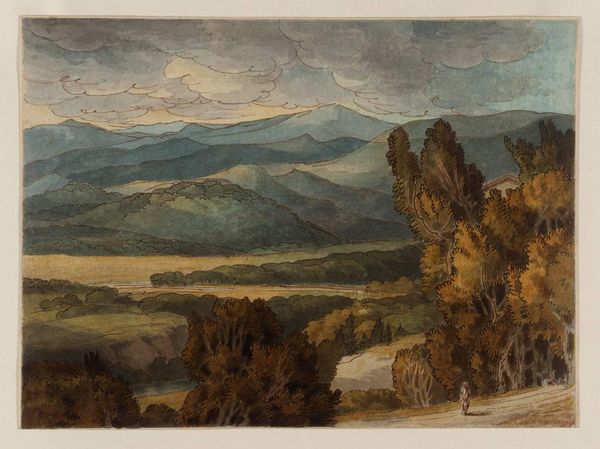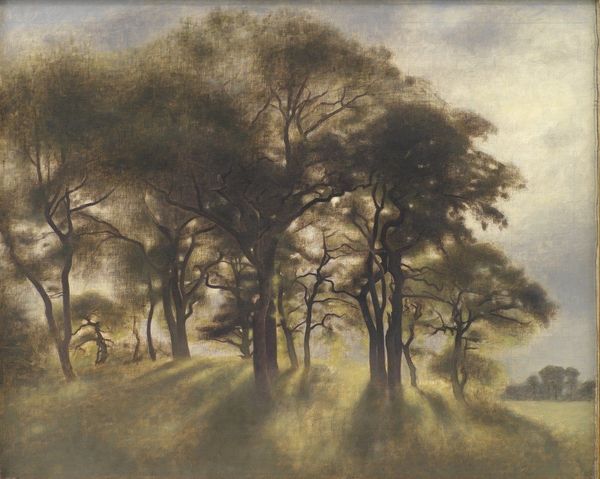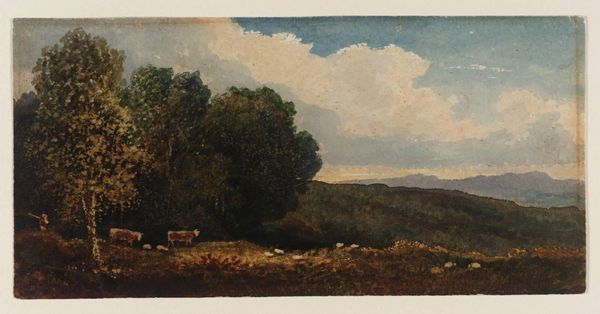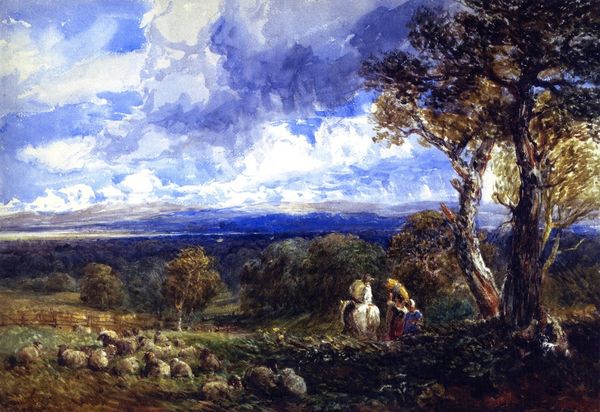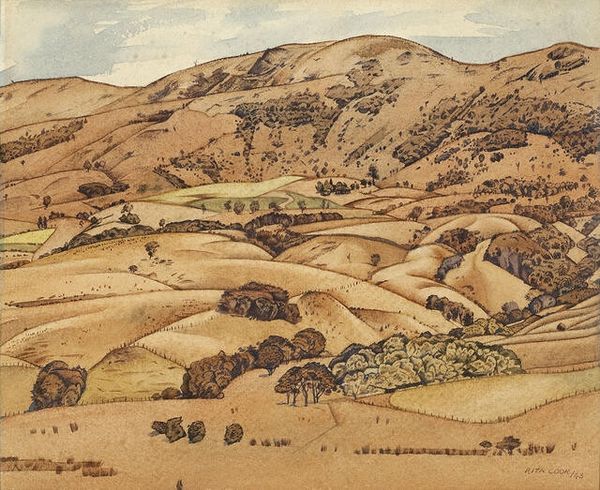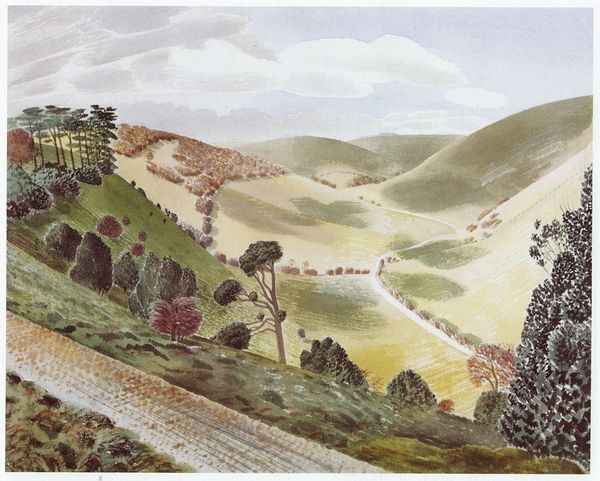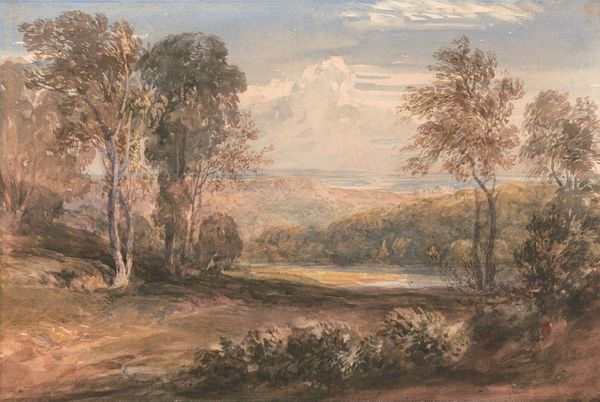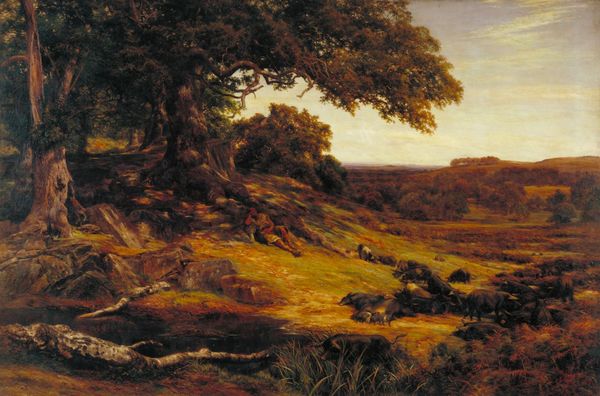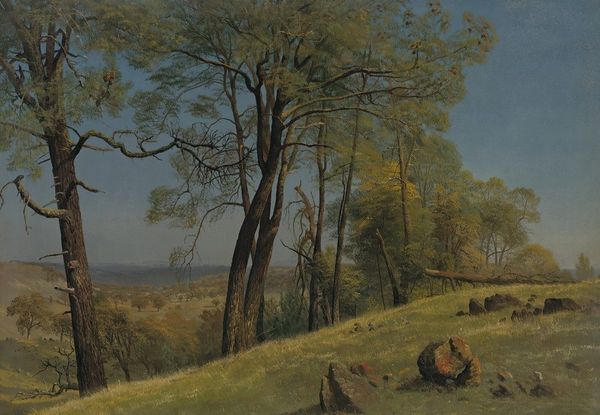
tempera, painting, plein-air, watercolor
#
tempera
#
painting
#
plein-air
#
landscape
#
impressionist landscape
#
oil painting
#
watercolor
#
romanticism
#
watercolour illustration
#
watercolor
Copyright: Public domain
Samuel Palmer made "The Golden Valley," a watercolor, at a time of rapid industrial and social change in England. This idealized vision of rural life, with its golden light and harvest imagery, speaks to the anxieties of a society transforming from agrarian to industrial. Palmer was associated with a group of artists called the Ancients, who looked to pre-industrial, pastoral landscapes as a source of spiritual and aesthetic inspiration. The painting employs visual codes of abundance and harmony, evoking a sense of nostalgia for a disappearing way of life. Consider how the image creates a sense of warmth and enclosure, offering a respite from the harsh realities of urban existence. To fully understand Palmer’s vision, we can consult his letters and journals, as well as agricultural records from the period. These sources help us see how Palmer’s art reflects a longing for an older social order, one where labor was connected to the land and community values prevailed. "The Golden Valley" then is an important record of cultural values at a time of great institutional change.
Comments
No comments
Be the first to comment and join the conversation on the ultimate creative platform.


